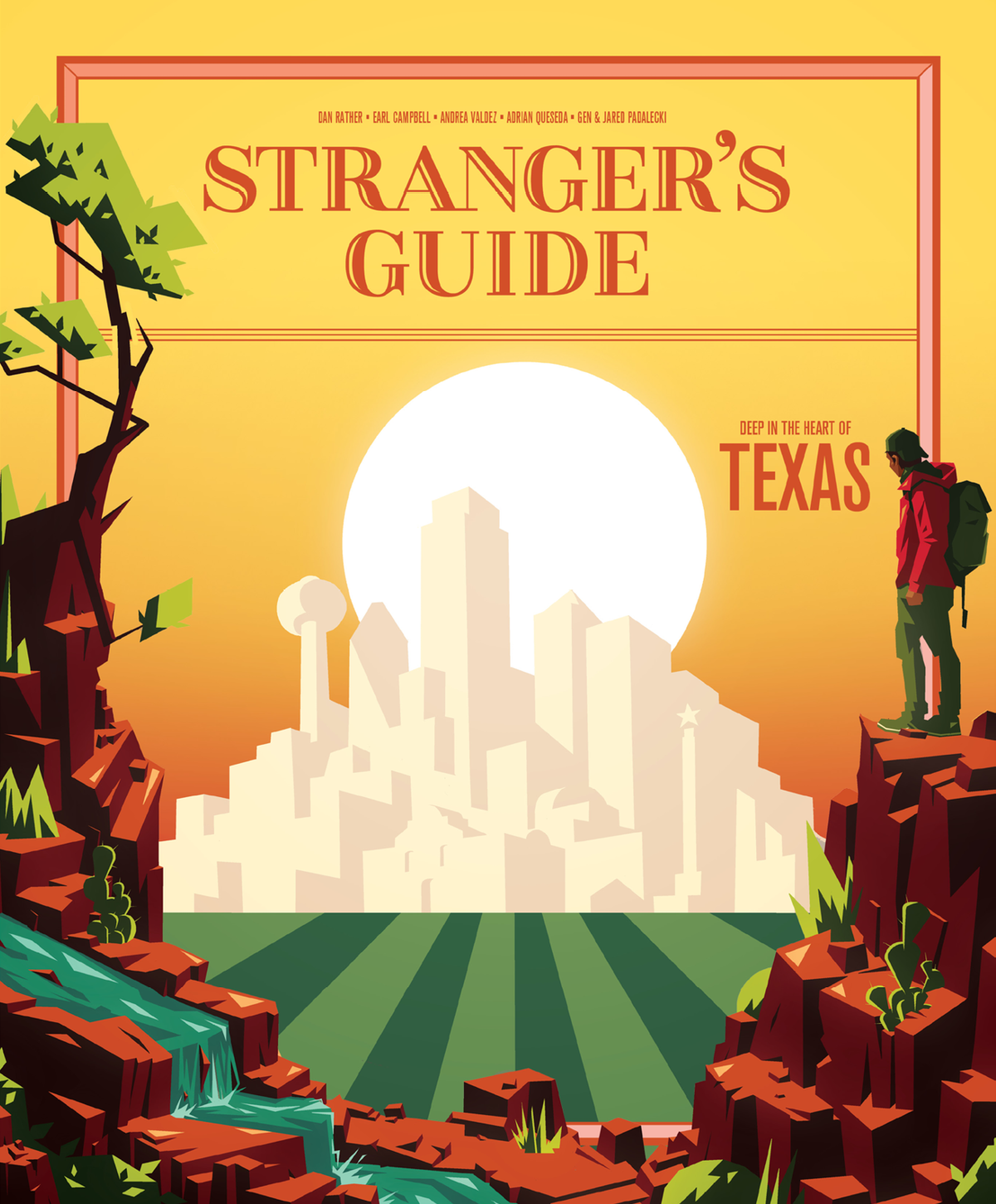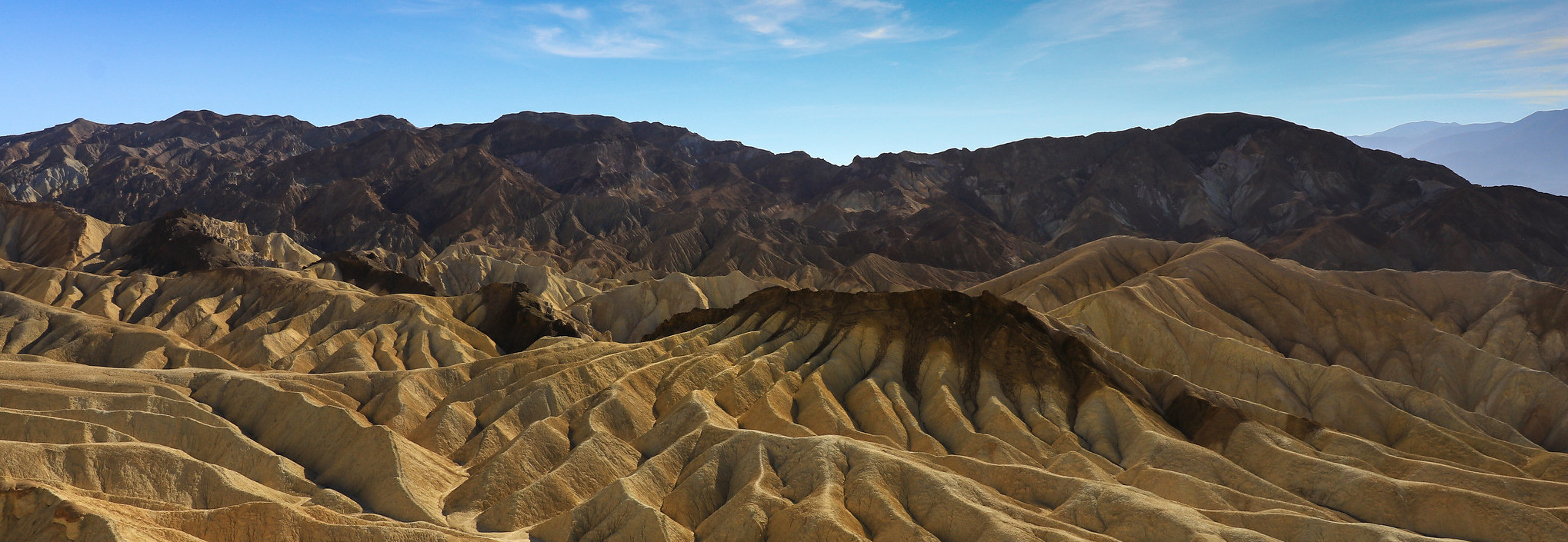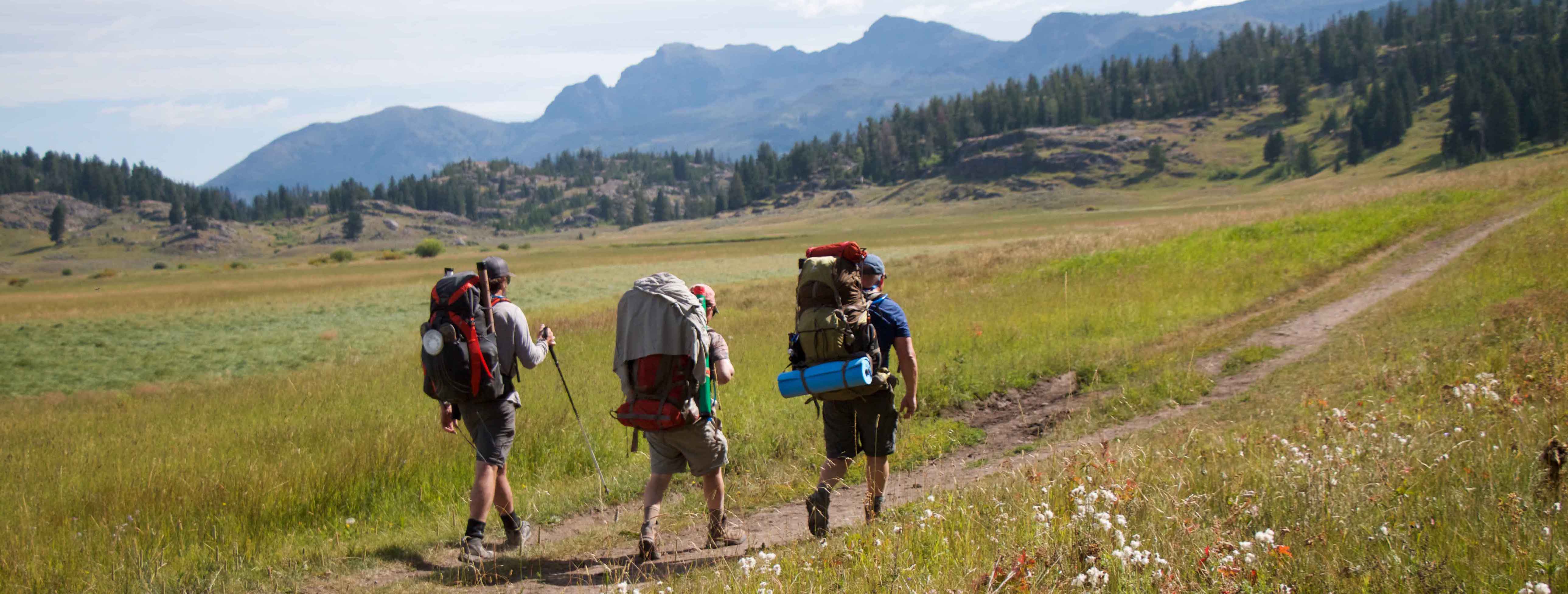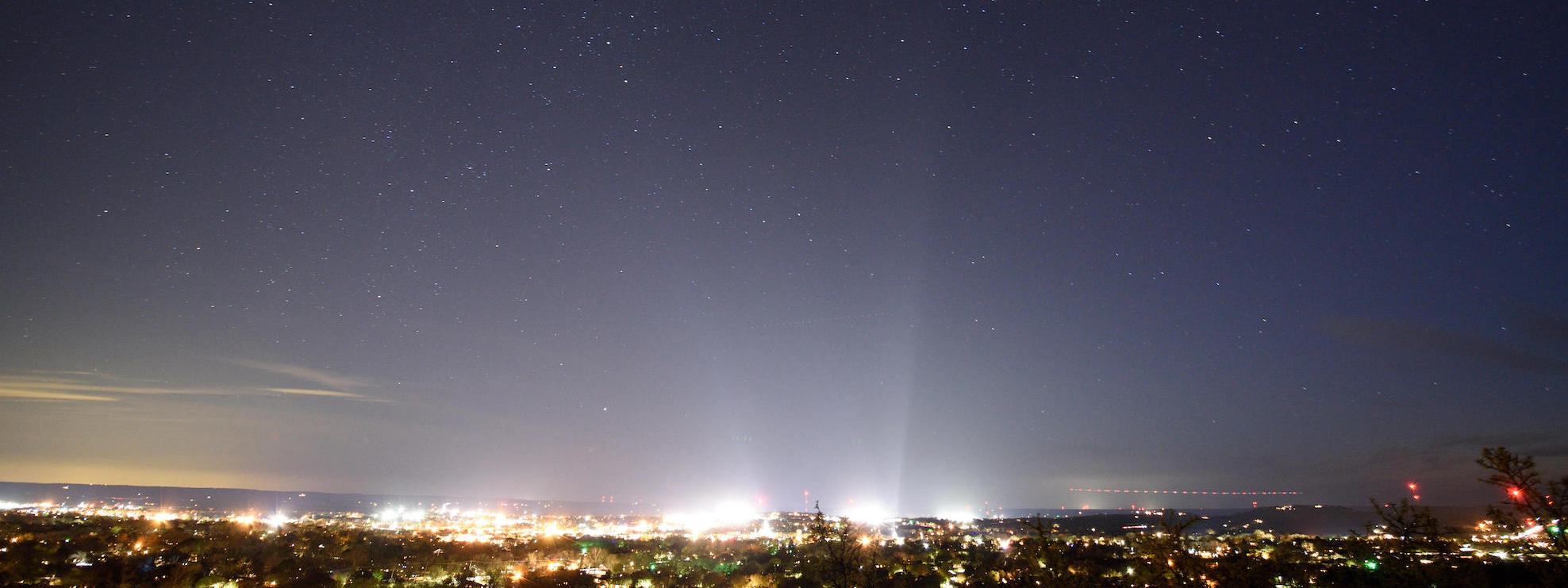
When we set out to climb Enchanted Rock, the setting sun turns the 425-foot granite dome a blushing pink. I follow park interpreter Jessica DeBoer up the Summit Trail, a misnomer for the steep, virtually unmarked route we take up the bare face of the rock. Our labored breathing is punctuated by sounds that float up from the campground below: the inquisitive whoo of a barred owl, the fussy chirp of a mockingbird, a few human voices. At the top, we face the western horizon, where the distant hills form a crisp outline against the orange sky. Below us, vultures ride the thermals rising from the rock as it cools. A few bats flutter overhead, clicking and chirping.
An hour later, in full darkness, DeBoer points out the stars: first Deneb, the tail of Cygnus the swan, and then Ascella, Kaus Australis, and the six other stars in the western half of Sagittarius that form a teapot. Then the curve of the Corona Borealis. Then there are too many stars to count or name, and I lie down on the granite to take them in. A pale cloud, like cream curling through coffee, stretches across the sky: the Milky Way. This is our home galaxy, a spiral 100,000 light-years across; because Earth is part of that spiral, and we’re looking at it edgewise, the galaxy appears as a stripe across the sky instead of a spinning circle. The longer I stare into the dark, the more stars appear. Some are bright and seemingly close, some only a faint smudge of light.
This is the view—and the sense of awe—that dark-skies advocates in Texas are trying to protect. As the state’s population booms, artificial light has come between Texans and the stars. Cities including Houston, San Antonio and El Paso are replacing their streetlights with LEDs, which save money, but the bright white type of LED typically used creates more glare. The ever-expanding suburbs enlarge those cities’ light footprints, consuming the darkness as they grow. The oil and gas industry, and the housing and restaurants that spring up to service its workers, light chunks of the sky over the Permian Basin in West Texas and the Eagle Ford Shale south of San Antonio.
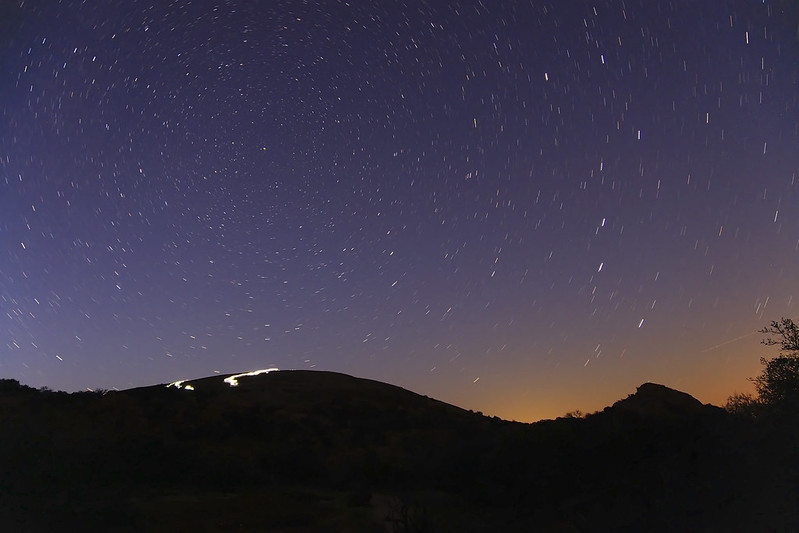
Astronomers lament their difficulty seeing stars, but light pollution causes a host of more immediate problems for animal and human health. In the presence of too much artificial light, fireflies can’t find their mates. Birds fly into buildings. Turtle hatchlings race toward roads instead of the moonlit ocean. Too much light, especially at the blue end of the spectrum, disturbs humans’ sleep, suppresses melatonin production and may be connected to the proliferation of some cancers.
In Texas—and particularly in the Hill Country that surrounds Enchanted Rock in the center of the state—a coalition of amateur astronomers, park rangers, conservationists and musicians is trying to reclaim the natural night sky. Texas ranks behind only Utah and Arizona in its number of towns and parks that have earned recognition from the International Dark-Sky Association. More communities are in the process of applying for Dark Sky Place designation, which requires them to regulate outdoor lighting and educate residents about protecting the night skies.
Even a light pollution problem as big as Texas’s can be fixed with relatively simple solutions.
“Of all the types of pollution that mankind has foisted on this world, light pollution is the easiest to stop and even reverse,” says Wayne Gosnell, a Hill Country dark-sky advocate. “It’s probably the cheapest to do, and it can be done within our own lifetimes. It’s not rocket science. You just get the light pointed down toward the ground where it’s needed, instead of letting it escape up into the sky.”
. . .
When Cliff Kaplan speaks to a group about night sky preservation, one of the first slides he shows is a satellite image of light pollution in the United States. Most of the eastern half of the country is covered with artificial light, but the glow stops abruptly at Interstate 35, which runs from Minnesota to the Rio Grande. The Texas Hill Country is just on the dark side of that line.
“We always say, in the Hill Country, that we’re on ‘the edge of night,’” says Kaplan, the night skies program director at the Hill Country Alliance, a central Texas conservation nonprofit.
This contrast was plainly visible as I stood atop Enchanted Rock. Looking southeast, I could see pale blue domes of light created by the nearby small town of Fredericksburg and San Antonio beyond it. When I turned to face the opposite direction, I could barely distinguish where the sky ended and the earth began.
Of all the types of pollution that mankind has foisted on this world, light pollution is the easiest to stop and even reverse.
In 2014, Enchanted Rock State Natural Area was one of the first parks in Texas to be designated an International Dark Sky Park by the IDA. The application process required park superintendent Doug Cochran and his team to evaluate every light on the property, remove any they deemed unnecessary, and commit to hosting programs to educate the public about the night sky. Cochran had significant help from the Friends of Enchanted Rock group and Ken Kattner, a Houston lawyer who had built a private observatory near the park in 2010 and soon got involved in dark-sky advocacy. Kattner went on to join the board of the International Dark Sky Association and now serves as president of its board.
Applicants for IDA recognition must quantify the park or town’s darkness, using measurements from a sky quality meter. But Enchanted Rock had plenty of anecdotal evidence. For a while, Cochran was conducting at least a dozen nighttime search-and-rescue missions every month. Park visitors would stay on the dome after dark and then, on the hike down, lose their way—even with cell phone flashlights. Now, the Summit Trail closes 30 minutes after sunset, with limited exceptions like my hike with DeBoer.
The same year Enchanted Rock earned IDA status, the town of Dripping Springs, 70 miles away, became the world’s sixth Dark Sky Community. The three small towns closest to Enchanted Rock—Fredericksburg, Llano and Mason— have enacted outdoor lighting ordinances. Fredericksburg’s helped the town of 11,000 become a Dark Sky Community in February 2020. Becoming a Dark Sky Community is more complicated than becoming a Dark Sky Park: towns have far more lights, more people to convince and more regulations to pass. Still, Fredericksburg city manager Kent Myers says the outdoor lighting regulations had no organized opposition, because locals wanted to preserve their town’s heritage and because darker skies attract tourists. Even the new Starbucks and Whataburger on the edge of town were careful to use shielded fixtures to light their parking lots.
County governments, which have jurisdiction over areas outside the city limits, have far less authority. This is part of the appeal of moving to a place like unincorporated Llano County, where most of Enchanted Rock State Natural Area is located. You can build a house, observatory or fishing pond on your property, and no one can stop you or tell you what it should look like.
This means that neighbors often have little recourse when a new billboard or ballpark lights up their night sky. Texas IDA chapter director Cindy Luongo Cassidy, who lives outside
of Dripping Springs, has seen her view of the Milky Way diminished by the flood-lights from a nearby baseball complex. The stadium lights at a second area sports complex called the Field of Dreams have drawn the ire of neighbors up to two miles away. “The locals call it the field of nightmares,” she says. “It’s like a big alien spaceship landing with monster lights.”
Of Texas’s 254 counties, only a dozen have been authorized by the legislature to implement a lighting ordinance. Among them are the seven counties surrounding the McDonald Observatory, a research unit of The University of Texas at Austin, located in the Davis Mountains in far West Texas. Similar exceptions are granted to two other counties with observatories. Another has been made for parts of three counties near a San Antonio Army base where darkness is essential to soldiers’ nighttime training.
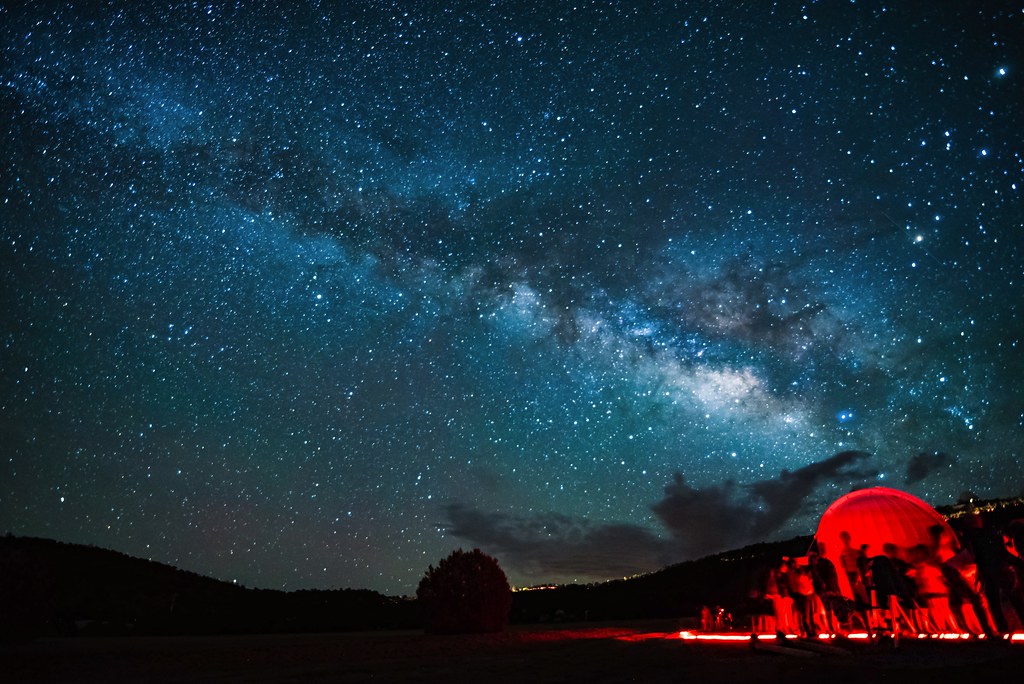
To further complicate matters, the legislature, which meets every other spring, passed a bill in 2019 prohibiting local governments from regulating building materials—including lighting—beyond the guidelines in national building codes. The measure, filed by a representative in the real estate development business, included an exception for existing International Dark Sky Communities but effectively (albeit unintentionally) prevented other towns from achieving full IDA recognition. Dark-sky advocates say they’ll work to get the measure changed in 2021.
Ordinances aren’t a panacea, says Bill Wren, who has served as the McDonald Observatory’s lighting diplomat for 30 years. Enforcement is limited, because the county’s “code officer” is the sheriff, who generally has other priorities. Instead, Wren says, an ordinance can be a conversation piece. “You can start talking about, ‘By the way, did you know that this county has an outdoor lighting ordinance?’ and then talk about good lighting, and forget about regulations and enforcement,” he says. “Just promote good lighting, because once people see it, they generally would prefer it over the really bright, glary stuff.”
Wren adopts this approach when he visits oil and gas installations in West Texas to advise the companies about how to light their equipment without impinging on astronomers’ ability to conduct research. He shows them how, when lights are shielded and aimed with more precision, the companies can actually use lower-wattage lights and fewer fixtures. Better lighting saves money.
An education-first approach often works best across Texas, where more than 95 percent of land is privately owned and property rights are sacrosanct.
How to talk to neighbors whose lights are shining onto their property: “Hold on, pardner, that’s trespassin’!
“The whole property rights thing goes both ways,” Wren says. “I don’t want to tell you how to light your property, but once you start lighting my property it infringes on my rights. Keep your own light on your own property.”
That’s a conversation Wayne Gosnell, who lives in Blanco, 50 miles southwest of Enchanted Rock, encourages residents to have with their neighbors. The retired Army colonel has been working to curb light pollution in Blanco since the early 2000s. In 2018, he and fellow volunteers formed the Blanco County Friends of the Night Sky, which counts 106 members. The group updated the town’s lighting ordinance and applied to become a Dark Sky Community, Texas law permitting. It organized night sky art and essay contests for local schoolchildren and started a night-sky-friendly business recognition program. Its website coaches people on how to talk to neighbors whose lights are shining onto their property. The lesson opens with area vernacular: “Hold on, pardner. That’s trespassin’!”
Like other small towns outside Austin, Blanco has more than its fair share of guitar-strumming songwriters. On Friday afternoons, local troubadours arrange their camp chairs in a circle on the courthouse square and take turns playing original music. The Friends of the Night Sky challenged the group— “a lot of retired guys, a lot of ponytails, a lot of beards,” Gosnell says—to write songs about the night sky. The Friends recorded 13 of the songs on a CD called Deep in the Dark of Texas.
The fourth track, “Hill Country Nights,” by Ken Frederick, channels locals’ frustration with urban escapees who install overly bright lights on their new property:
“Don’t bring your city lights to our Hill Country nights. Don’t bring no neon signs, they’re not welcome if you try.
The only lights we need, God put up in the sky.
So please don’t bring those city lights to our Hill Country nights.”
Encouraged by Blanco’s success, the Hill Country Alliance’s Kaplan and his colleague Amy Jackson are helping organize Friends of the Night Sky groups in other Hill Country counties. “It looks more than ever like the birth or growth of a movement,” Kaplan says.
The movement’s next major project centers on Enchanted Rock. Kattner is coordinating an application to designate the park the center of an International Dark Sky Reserve. Reserves have a core of natural darkness surrounded by a peripheral area of at least 270 square miles. Within the boundaries of the reserve, 80 percent of the land and population must be governed by a strong lighting ordinance. Enchanted Rock would be the core, surrounded by peripheral land in the triangular area between Fredericksburg, Llano and Mason. The IDA guidelines don’t quite fit states like Texas, where counties have limited regulatory authority, but Kattner says the reserve board will likely request a waiver from the requirement that 80 percent of the land be governed by a lighting ordinance.
The designation would help protect the views that both inspire and unnerve Kattner when he visits his observatory. “It doesn’t matter what walk of life you are from, or your vocation,” he says. “When you look up, we all have the same questions: where did I come from? How did I get here? What is that up there?”
When DeBoer and I descend the rock, the darkness closes around us with an almost palpable embrace. We walk carefully, zig-zagging left and right to preserve our knees, navigating toward the amber lights on the headquarters building far below. From time to time, the eyes of a wolf spider glitter in the glow of our headlamps. At the bottom, I turn around and look back. The rock rises behind us, a granite ghost faintly visible against the speckled sky.
